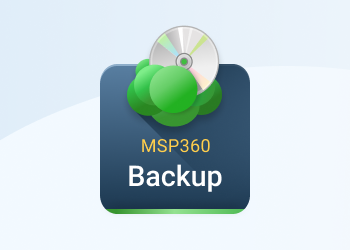This article explains that multiple viable approaches are available for on how to backup Microsoft Teams. It also offers guidance on best practices for maximizing the efficiency, security, and reliability of Microsoft Teams data protection.
Peer2Peer Backup: How to Back Up to Another Computer Over the Internet
Since MSP360 Backup supports file system repositories - apart from a wide range of cloud storage services - you may want to use it for a peer-to-peer backup (P2P backup). In this article, we are going to show how to create a backup using a VPN-connected storage repository. Continue reading
Windows Server 2012 Bare-Metal Recovery: What You Should Know
Any crucial desktop or server system needs two parts of protection: file backup and system backup. While file backup is all about user files and folders, system-level protection is necessary to recover the entire system in case of any failure. In this article, we are going to briefly compare Windows built-in image backup features with MSP360 Backup features. Continue reading
Introducing MSP360 Backup 2.3 for macOS & Linux
MSP360 software for Mac cloud backup and Linux cloud backup have been updated to support new Amazon S3 regions, new Microsoft Azure Archive & Cool storage tiers, and a new Linux distribution.
Continue reading
Taking Advantage of Web Access for macOS & Linux in MSP360 Backup
It's been a few months since we introduced MSP360 Backup 2.1 for macOS & Linux that brought support for Web Access — a feature that enables you to use a web-based user-interface for the app. So in this article we'll demonstrate how to enable Web Access and use it to perform regular operations.
Continue reading
How to Store Veeam Backups in the Cloud with MSP360 Backup
MSP360 Backup can be used for backing up your Veeam backup data into cloud storage. It gives you an extra level of confidence that important files are safe. In this post, we explain how to start using MSP360 Backup for backing up Veeam files. Continue reading
Support for Alibaba Storage in MSP360 Backup & Explorer
MSP360 Backup and Explorer have been updated to support Alibaba Cloud Storage.
Continue reading
MSP360 Backup Review on Linux Quest
Check out the review of our Linux backup software. Here Rob Collins, the Linux Quest host, looks at the easy set-up process for local backup.
The review is for freeware edition, but if you want to go Pro, they have a discount coupon link for Linux Quest viewers only. Enter their channel to win it!
Support for New Amazon S3 Regions in MSP360 Backup & Explorer
MSP360 Backup and MSP360 Explorer have both been updated to support recently added Amazon S3 regions.
Continue reading
Allocating MSP360 Backup VM socket licenses
MSP360 Backup VM edition by default comes with two processor socket licenses included, meaning that you can only backup your virtual machines from tte hypervisor that has no more than two physical processors. If your hypervisor incorporates three or more physical processors, you'll have to purchase an extra processor socket license for each processor. In this article we will explain how to purchase said socket licenses and attach them to your main MSP360 Backup VM edition license.
Introducing MSP360 Backup 5.8
MSP360 Backup 5.8 focuses on security, disk storage optimization, and a few other important features highlighted below.
Support for VMware Changed Block Tracking (CBT)
In MSP360 Backup 5.8, we’re improving VMware backup with our support for VMware's Changed Block Tracking (CBT).
Continue reading



